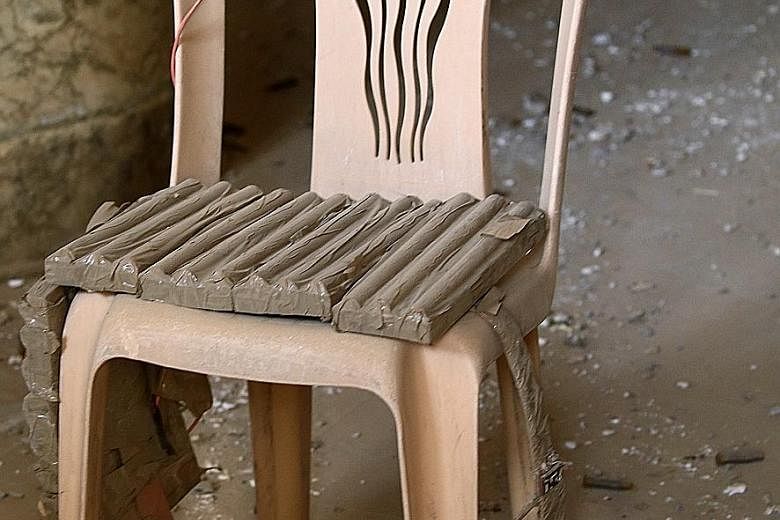BAGHDAD • The battle for Iraq's second city Mosul has neared the remains of ancient Nimrud, the military said, raising fears for the famed heritage site already ravaged by militant bombs and sledgehammers.
Troops and allied militias were yesterday advancing on two villages held by ISIS near the ancient site some 30km south of Mosul, the Joint Operations Command said.
"Units of the 9th Armoured Division and the Hashed al-Ashaeri (a tribal militia) are beginning to advance to liberate the villages of Abbas Rajab and Al-Nomaniyah, towards Nimrud," it said.
Nimrud was one of the great centres of the ancient Middle East. Founded in the 13th century BC, it became the capital of the Assyrian empire, whose rulers built vast palaces and monuments that have drawn archaeologists from around the world for more than 150 years.
Many of its monumental stone sculptures and reliefs were taken for display in museums around the world but some of the more massive structures were on site when the Islamic State in Iraq and Syria swept through in mid- 2014.
In April last year, ISIS posted a video online of its fighters sledgehammering monuments before planting explosives around the site and blowing it up. It was part of a campaign of destruction against heritage sites under their control that also took in ancient Nineveh on the outskirts of Mosul, Hatra in the desert to the south and Palmyra in neighbouring Syria.
 An explosive belt belonging to ISIS militants is seen on a chair in Bashiqa. The Iraqi town was recaptured from ISIS as troops and allied militias advanced yesterday on villages held by the militants. PHOTO: REUTERS
An explosive belt belonging to ISIS militants is seen on a chair in Bashiqa. The Iraqi town was recaptured from ISIS as troops and allied militias advanced yesterday on villages held by the militants. PHOTO: REUTERS ISIS says the ancient monuments are idols that violate the teachings of its extreme form of Sunni Islam. But that has not stopped the group from trafficking the artefacts it purports to revile on the black market to fund its operations.
It is unclear what still remains of Nimrud's ancient ruins as Iraqi forces move closer.
But it is just one of a number of treasured heritage sites threatened with more damage by the offensive launched by the government on Oct 17 to retake Mosul, the last major ISIS stronghold in Iraq.
The area where ancient Hatra is sited may see fighting between ISIS and pro-government militias which aim to retake the town of Tal Afar, which commands Mosul's western approaches. Ancient Nineveh is also in the path of advancing troops.
An Iraqi official on Tuesday said Kurdish peshmerga forces had seized the town of Bashiqa near Mosul, which would be a final step in securing the eastern approaches to the city.
And as Iraqi forces push into Mosul, a Kurdish-Arab militia alliance has been advancing on Raqqa - the militants' de facto Syrian capital - in support of air strikes.
The Syrian Observatory for Human Rights on Wednesday said a US-backed coalition strike had struck the ISIS-held village of Al- Heisha, about 40km north of Raqqa. The Britain-based monitoring group said nine women and two children were among the 20 civilians killed and that 32 others had been wounded.
But the Syrian Democratic Forces, the militia alliance that Washington is supporting in the assault, denied the reports of civilian deaths as " ISIS news".
Some 200 families had fled Al- Heisha, according to an official from the alliance.
AGENCE FRANCE-PRESSE

